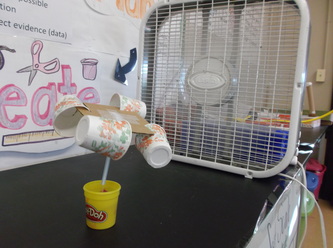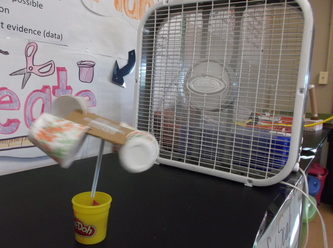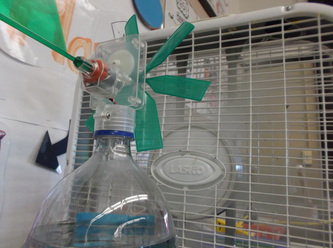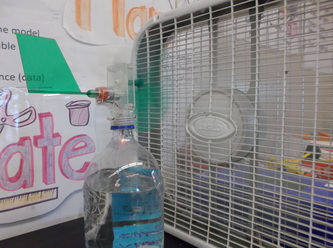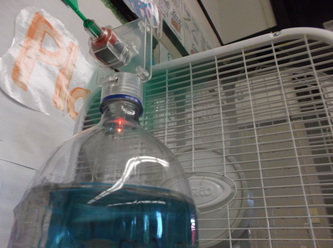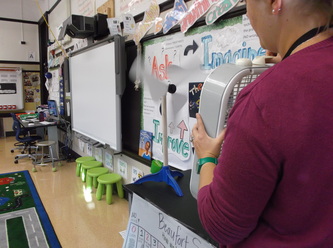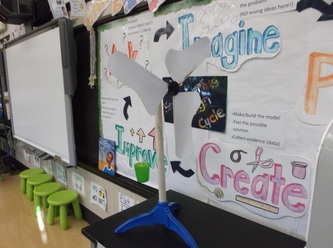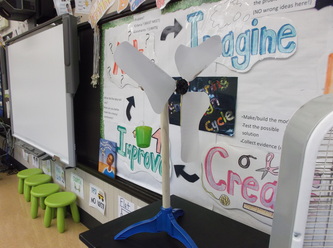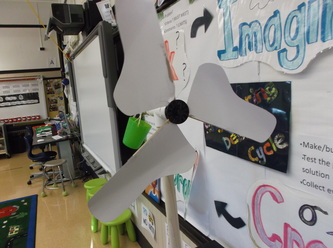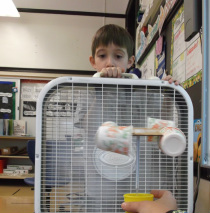
Mechanical engineers design machines that do wonders for us! While all machines need a force to get them moving, some specific machines use the wind to do its work. We're learning new vocabulary related to mechanical engineers, including anemometer, wind turbine, and windmill. First graders have had the chance to see all of these machines in action...and how they do work for us! The student to the left holds the fan as Mrs. Brinza holds an anemometer in front of it. An anemometer is a tool scientists use to measure the wind's speed.
